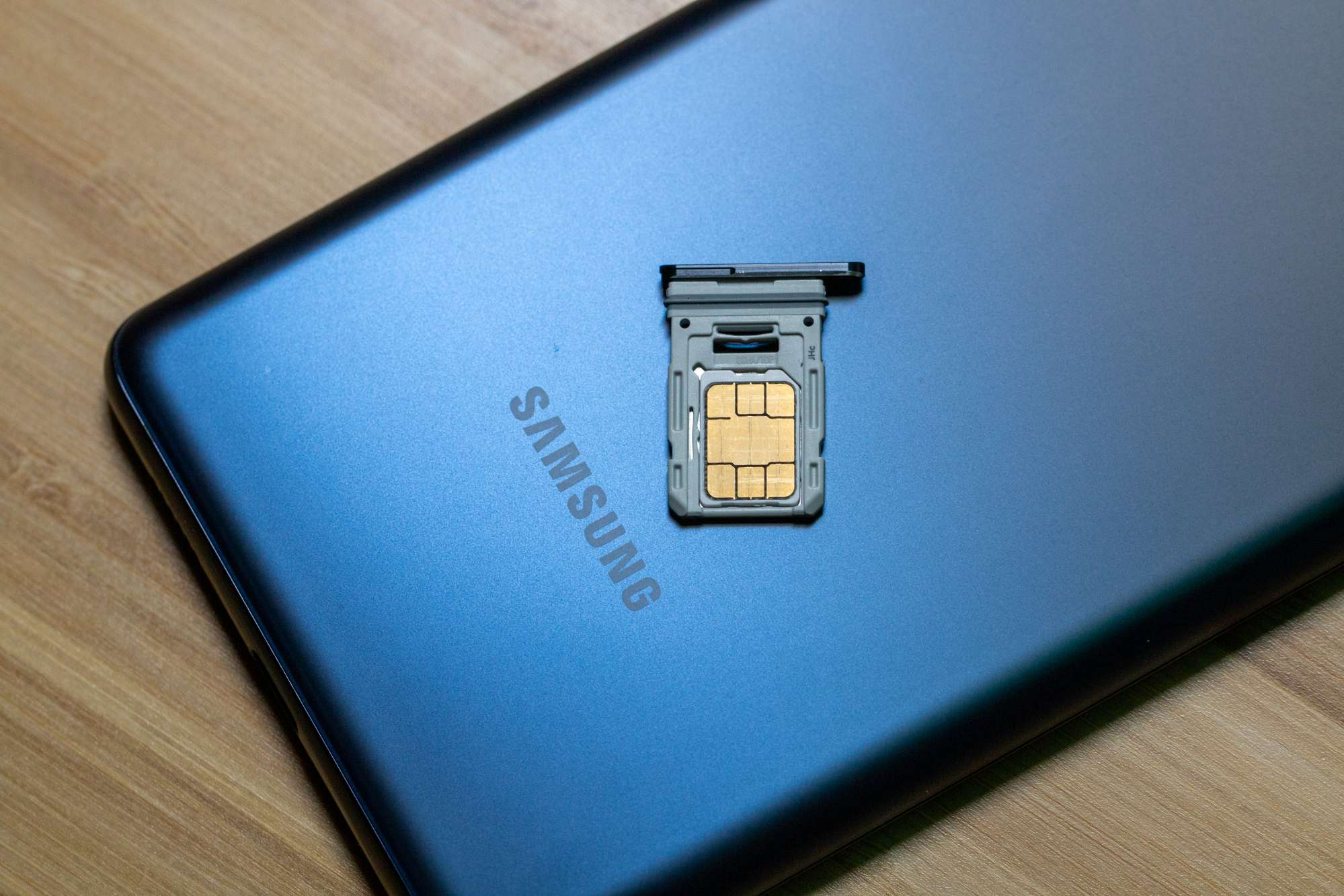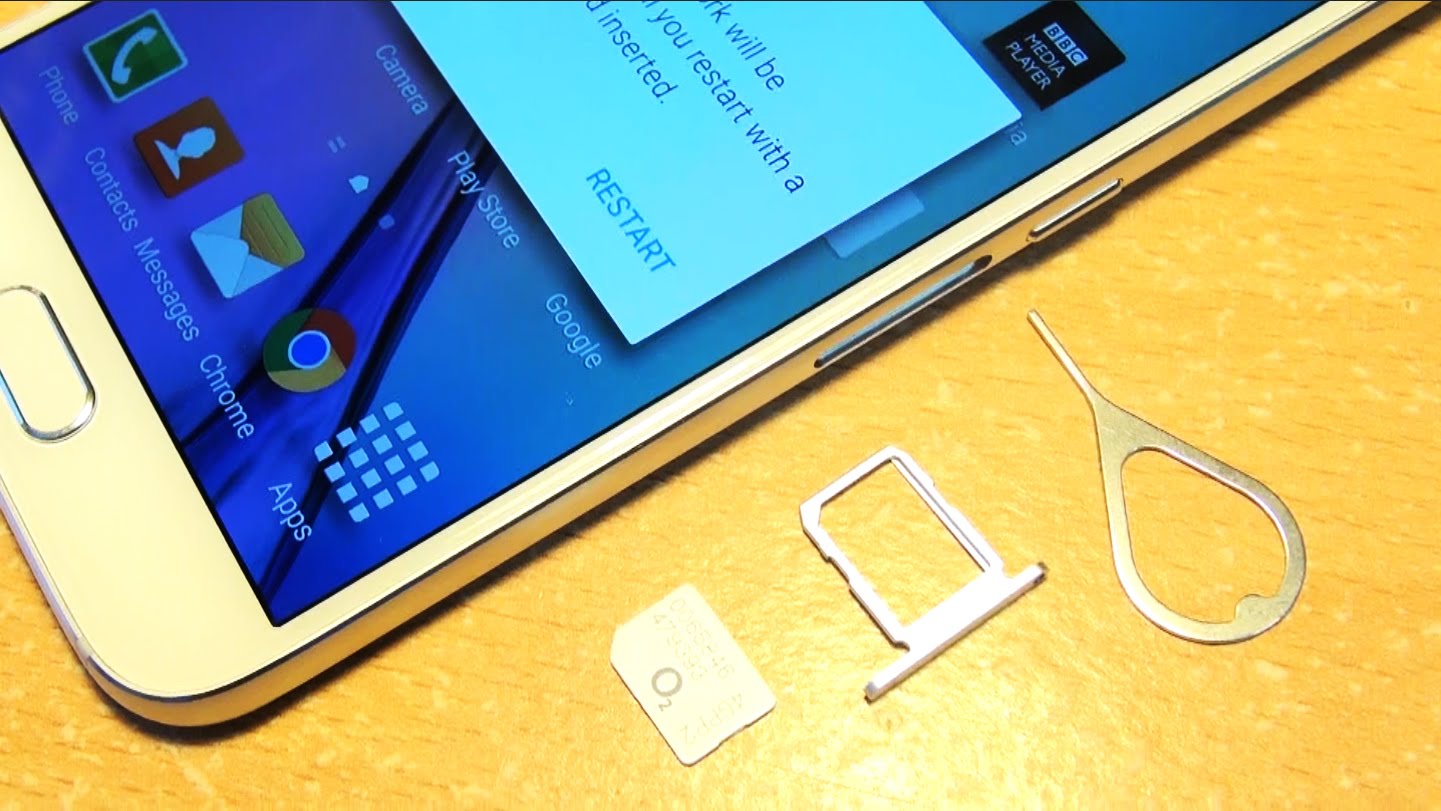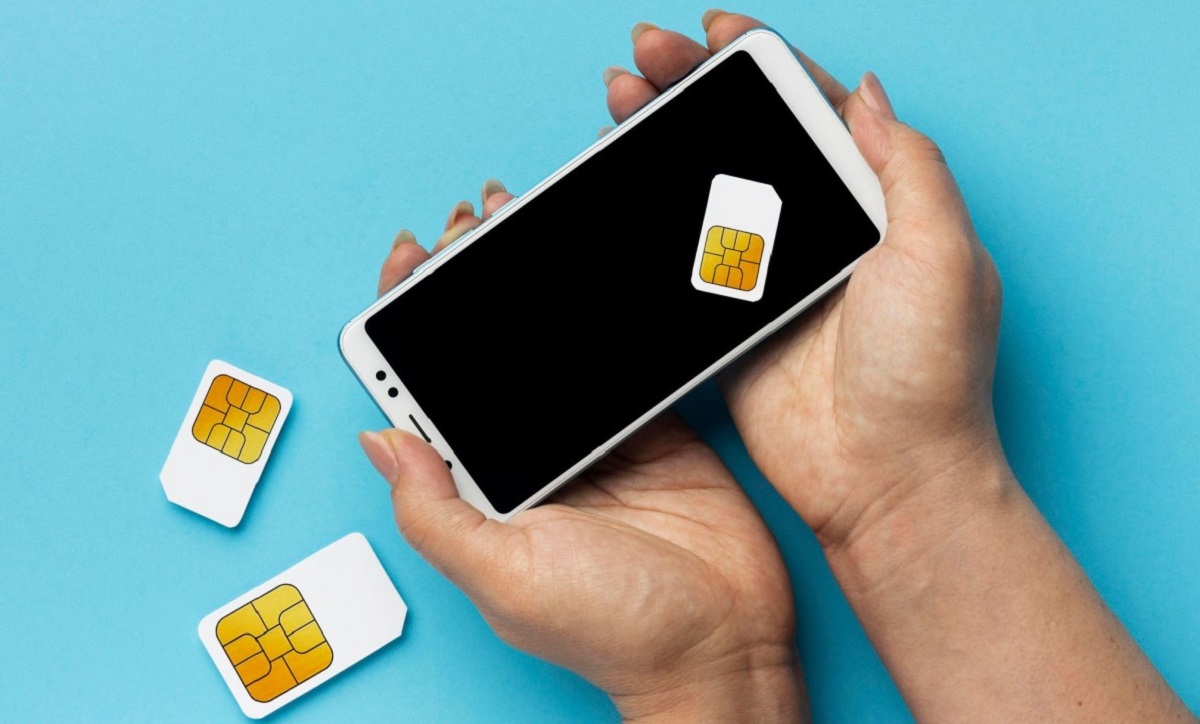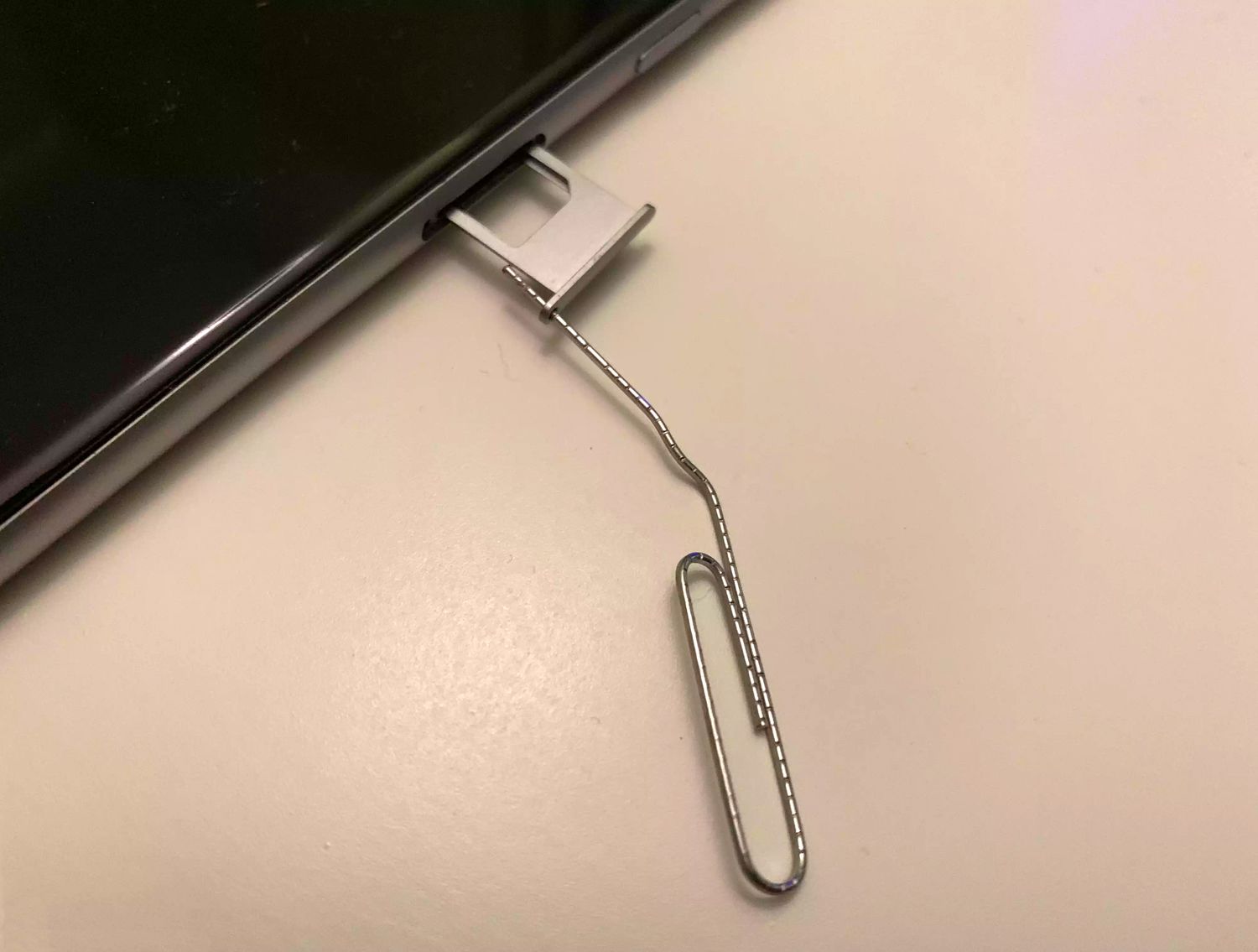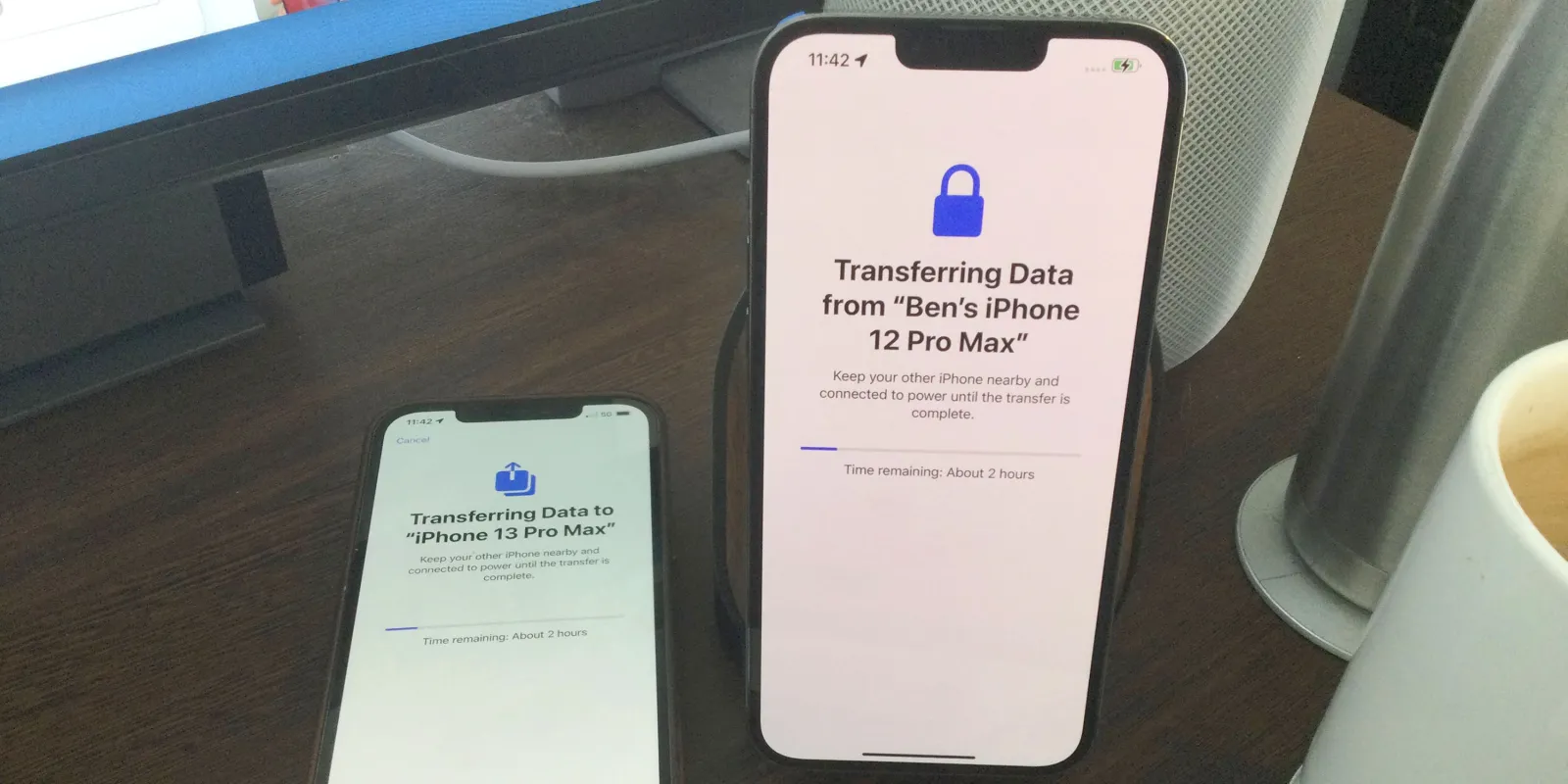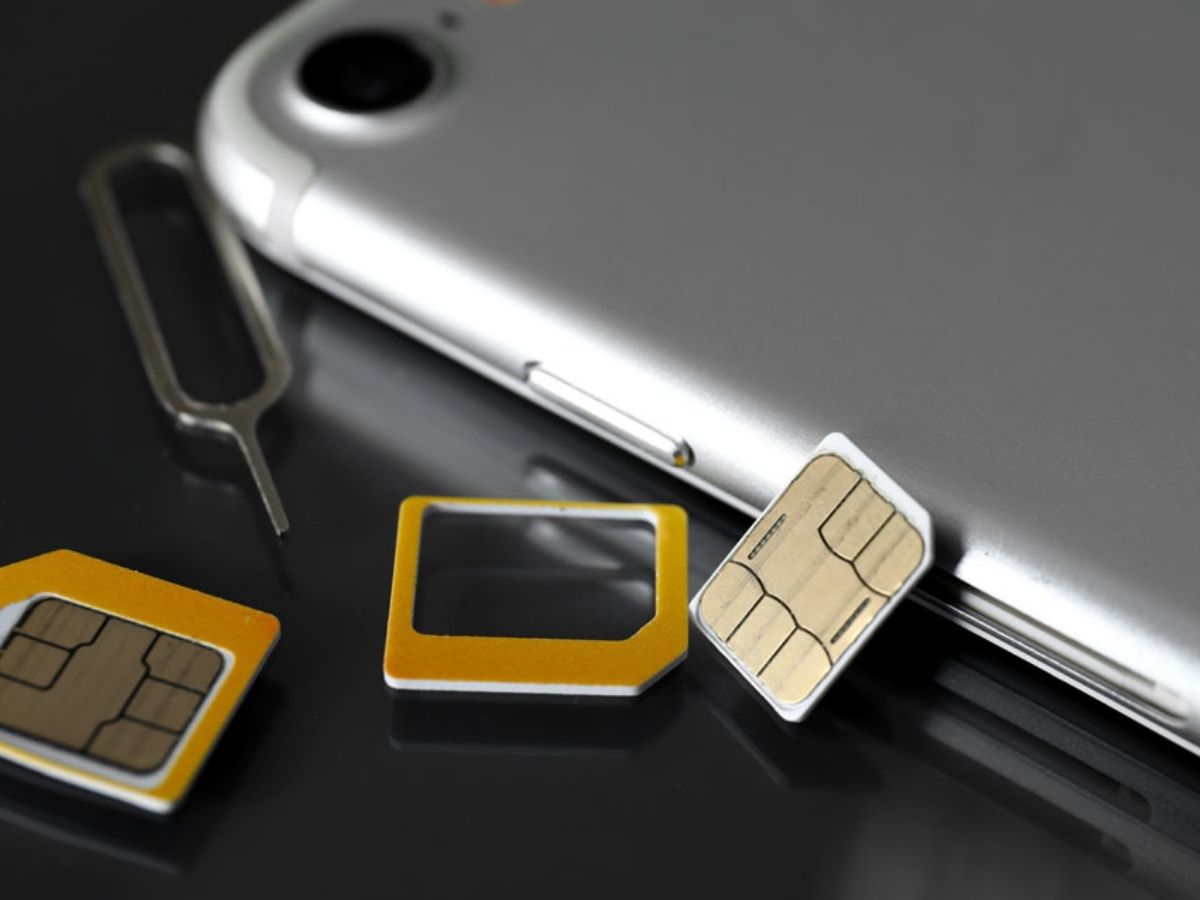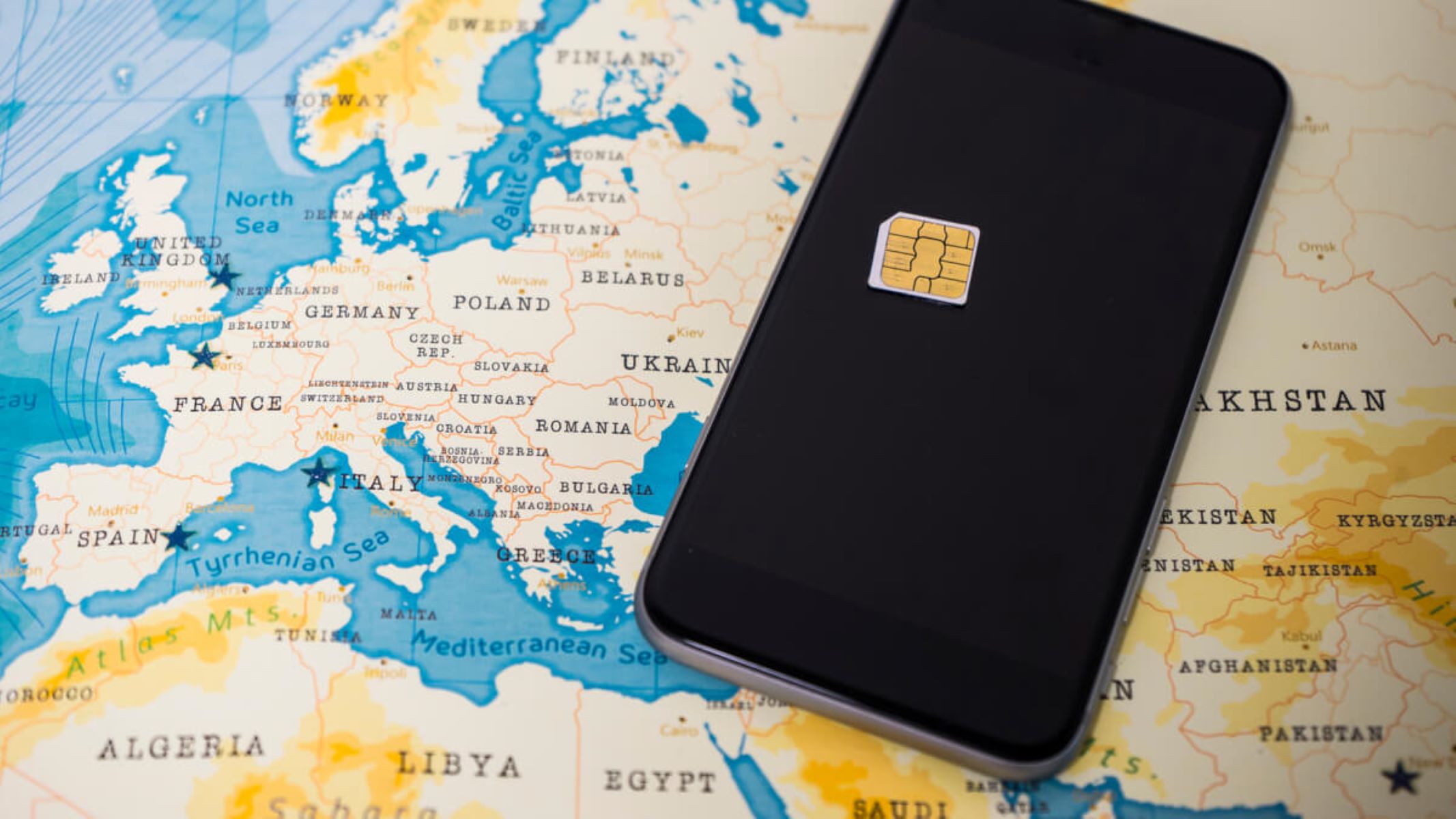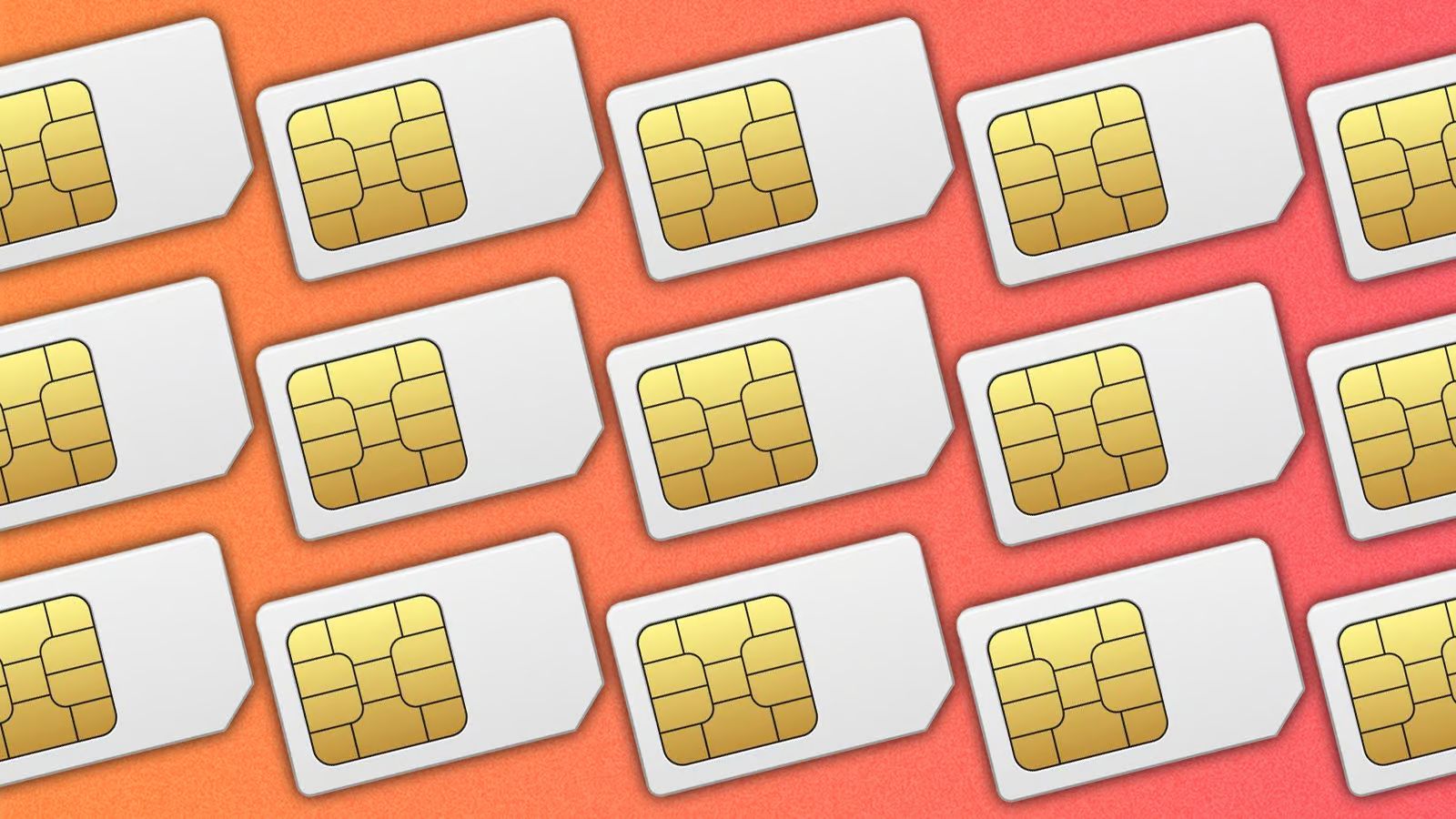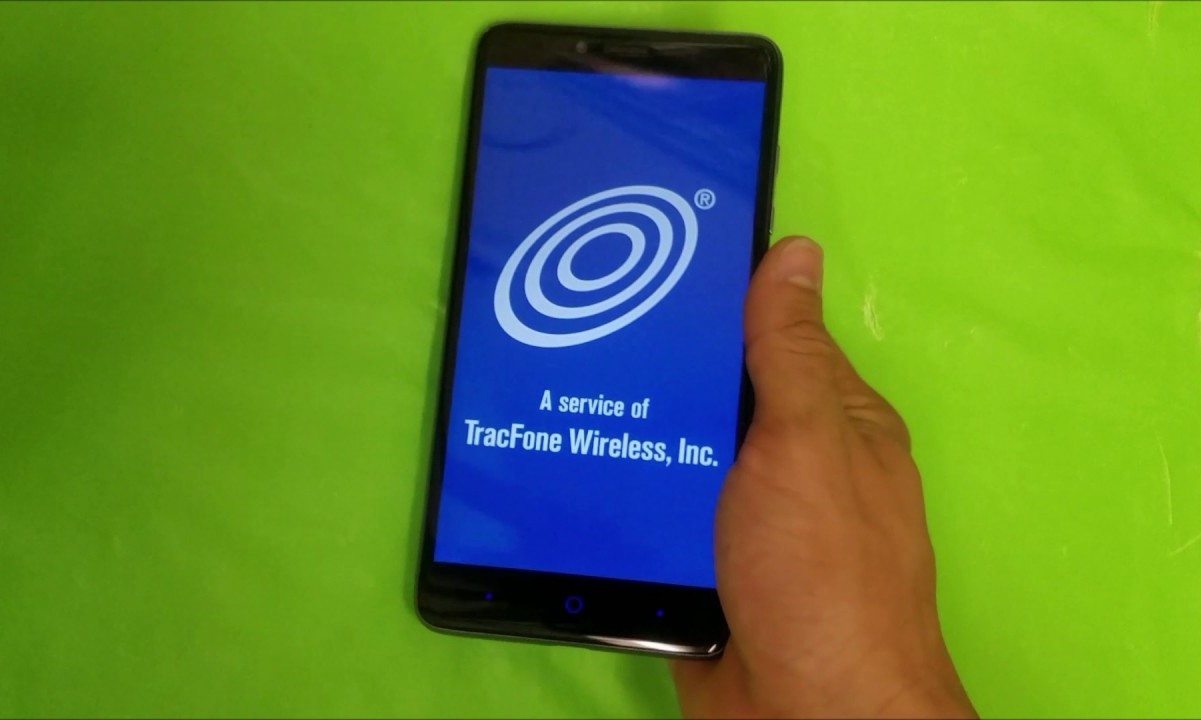Introduction
In today's fast-paced world, mobile devices have become an indispensable part of our daily lives. From staying connected with loved ones to accessing essential information on the go, our smartphones have evolved into multifunctional tools that cater to various aspects of our personal and professional lives. At the heart of these devices lies a small yet crucial component known as the Subscriber Identity Module (SIM) card. This tiny chip plays a pivotal role in connecting our devices to cellular networks, enabling us to make calls, send texts, and access mobile data.
Understanding the significance of the SIM card is essential, especially when it comes to the seamless transition to a new phone. Whether you've upgraded to a new device or are simply switching to a spare phone, knowing how to transfer your SIM card correctly is crucial for uninterrupted connectivity. This comprehensive guide aims to demystify the process of transferring a SIM card to another phone, empowering you to navigate this transition with ease and confidence.
As we delve into the intricacies of SIM card transfers, it's important to note that the process may vary depending on the type of SIM card and the specific devices involved. However, armed with the right knowledge and a clear understanding of the steps involved, you can effortlessly transfer your SIM card without encountering common pitfalls and challenges.
By the end of this guide, you'll emerge with a solid grasp of the fundamental steps required to transfer your SIM card to another phone, as well as valuable insights into troubleshooting potential issues that may arise during the process. So, let's embark on this journey to unravel the art of seamlessly transferring your SIM card, ensuring that your mobile connectivity remains uninterrupted as you transition to a new device.
Understanding SIM Cards
Subscriber Identity Module (SIM) cards serve as the linchpin of mobile communication, wielding significant influence over the connectivity and functionality of our devices. These small, thumbnail-sized chips are designed to securely store essential information, including unique identifiers, network authentication keys, and personal data associated with the user's mobile account. By comprehending the core functions and types of SIM cards, users can gain a deeper insight into the pivotal role these tiny components play in the realm of mobile technology.
Functions of SIM Cards
SIM cards are instrumental in facilitating the identification and authentication of mobile subscribers within cellular networks. They store crucial details such as the International Mobile Subscriber Identity (IMSI), which uniquely identifies each subscriber, and the authentication key used to verify the user's identity when connecting to the network. Additionally, SIM cards contain the Integrated Circuit Card Identifier (ICCID), a unique serial number that distinguishes each SIM card, and the Mobile Subscriber Integrated Services Digital Network Number (MSISDN), which represents the user's phone number.
Types of SIM Cards
SIM cards come in various form factors, including the standard SIM, micro-SIM, and nano-SIM. The standard SIM, also known as a mini-SIM, was prevalent in older devices and measures about 25x15mm. The micro-SIM, introduced to accommodate slimmer devices, measures approximately 15x12mm. The nano-SIM, the smallest variant, measures 12.3×8.8mm and is commonly found in modern smartphones. Additionally, embedded SIM (eSIM) technology has emerged as a virtual SIM card embedded within the device, eliminating the need for a physical SIM card and allowing for remote provisioning of mobile subscriptions.
Significance of SIM Cards
SIM cards are pivotal in enabling voice calls, text messaging, and mobile data access, forming the bedrock of mobile communication. They also play a crucial role in securing the user's identity and personal information, fostering a secure and reliable connection to cellular networks. Moreover, the portability of SIM cards allows users to effortlessly switch between devices while retaining their mobile identity and subscription details, underscoring their versatility and convenience.
By delving into the intricacies of SIM cards, users can gain a profound understanding of these essential components, empowering them to navigate the process of transferring SIM cards to another phone with confidence and clarity. This foundational knowledge forms the cornerstone of seamless mobile connectivity, ensuring that users can harness the full potential of their devices while maintaining uninterrupted access to essential communication services.
Transferring SIM Cards to Another Phone
Transferring a SIM card to another phone is a fundamental aspect of transitioning to a new device while retaining seamless connectivity. Whether you're upgrading to a new smartphone or simply switching to a spare phone, the process of transferring your SIM card is essential for maintaining access to voice calls, text messaging, and mobile data. Understanding the steps involved in this transfer empowers users to navigate this transition with ease and confidence, ensuring uninterrupted access to essential communication services.
The process of transferring a SIM card to another phone involves carefully removing the SIM card from the current device and inserting it into the new one. This straightforward yet crucial task allows users to seamlessly transition their mobile identity and subscription details to the new device, enabling them to pick up where they left off without any disruption to their connectivity.
It's important to note that the specific steps for transferring a SIM card may vary depending on the type of SIM card and the design of the devices involved. For devices that utilize a standard SIM, micro-SIM, or nano-SIM, the process typically involves locating the SIM card tray, removing the SIM card from the current device using a SIM eject tool or a paperclip, and carefully inserting it into the SIM card slot of the new phone.
In the case of devices that feature embedded SIM (eSIM) technology, the process may differ, as eSIMs are not physical cards and instead rely on remote provisioning to activate mobile subscriptions. Users can typically transfer their eSIM profiles to a new device by following the specific instructions provided by their mobile network operator or carrier.
By understanding the nuances of transferring SIM cards to another phone, users can seamlessly transition to a new device while preserving their mobile connectivity. This process is integral to ensuring that the user's phone number, subscription details, and network authentication remain intact, allowing for a smooth and uninterrupted transition to the new device.
As we delve deeper into the intricacies of transferring SIM cards, it's essential to explore the specific steps involved in this process, empowering users to execute the transfer with precision and confidence. Let's embark on a comprehensive exploration of the fundamental steps required to transfer a SIM card to another phone, ensuring that mobile connectivity remains uninterrupted as users transition to their new device.
Steps to Transfer SIM Card to Another Phone
Transferring a SIM card to another phone is a straightforward yet crucial process that ensures uninterrupted mobile connectivity as you transition to a new device. Whether you're upgrading to a new smartphone or switching to a spare phone, following these fundamental steps will empower you to seamlessly transfer your SIM card, preserving your mobile identity and subscription details.
-
Prepare the Necessary Tools: Before initiating the transfer, ensure that you have the essential tools on hand. Depending on the type of SIM card and device, you may need a SIM eject tool, paperclip, or a small pin to access the SIM card tray.
-
Power Off Both Devices: To prevent any potential damage to the SIM card or the devices, power off both the current phone and the new phone before initiating the transfer.
-
Locate the SIM Card Tray: Identify the location of the SIM card tray on both the current phone and the new phone. The SIM card tray is typically located on the side of the device or, in some cases, under the back cover or battery.
-
Remove the SIM Card: Using the SIM eject tool, paperclip, or pin, gently insert it into the pinhole on the SIM card tray to release the tray. Carefully remove the SIM card from the current phone by sliding it out of the tray.
-
Insert the SIM Card: Once the SIM card has been removed from the current phone, carefully place it into the SIM card tray of the new phone. Ensure that the SIM card is properly aligned with the tray to avoid any potential damage during insertion.
-
Power On the New Phone: After securely inserting the SIM card, power on the new phone. Allow the device to recognize the SIM card and establish connectivity with the cellular network.
-
Verify Connectivity: Once the new phone has powered on, verify that the SIM card has been successfully recognized and that you have access to voice calls, text messaging, and mobile data.
By following these fundamental steps, you can seamlessly transfer your SIM card to another phone, ensuring that your mobile connectivity remains uninterrupted as you embrace your new device. It's important to handle the SIM card with care and precision throughout the transfer process to avoid any potential damage. With these steps at your disposal, you can navigate the transition to a new phone with confidence, knowing that your mobile identity and essential communication services remain seamlessly intact.
Troubleshooting Common Issues
While transferring a SIM card to another phone is generally a straightforward process, several common issues may arise during the transition. By being aware of these potential challenges and understanding how to troubleshoot them, users can navigate the transfer with confidence and address any hitches that may impede a seamless transition.
SIM Card Not Detected
One of the most prevalent issues users may encounter is the new phone failing to detect the transferred SIM card. In such instances, it is advisable to power off the device, carefully remove the SIM card, and reinsert it into the SIM card tray. Ensuring that the SIM card is securely positioned and properly aligned within the tray can often resolve this issue. If the problem persists, attempting the transfer with an alternate SIM card tray, if available, or seeking assistance from the device manufacturer or carrier may be necessary.
No Network Connectivity
In some cases, users may find that the new phone recognizes the SIM card but fails to establish network connectivity. To address this, verify that the device is within network coverage and that the SIM card is activated and not expired. Restarting the device and allowing it to reestablish network connections may resolve this issue. Additionally, ensuring that the device's network settings are correctly configured for the specific carrier can also aid in restoring network connectivity.
Incompatibility with Device
Occasionally, users may encounter compatibility issues when transferring a SIM card to a new phone, particularly if the device is locked to a specific carrier. In such scenarios, it may be necessary to ensure that the new phone is compatible with the SIM card's network provider. Unlocking the device, if applicable, or contacting the carrier to verify compatibility and obtain any necessary configuration settings can help address this issue.
Damaged or Faulty SIM Card
If the transferred SIM card exhibits signs of physical damage or has been compromised, such as a scratched or bent chip, it may hinder the transfer process. In such cases, users should exercise caution when handling the SIM card and consider seeking a replacement from their carrier to ensure seamless connectivity on the new device.
By being mindful of these common issues and the corresponding troubleshooting steps, users can confidently address any challenges that may arise when transferring a SIM card to another phone. This proactive approach empowers users to overcome potential hurdles and ensures a smooth transition to a new device, preserving uninterrupted access to essential communication services.
Conclusion
In conclusion, the process of transferring a SIM card to another phone is a pivotal aspect of transitioning to a new device while maintaining uninterrupted mobile connectivity. By understanding the fundamental functions and types of SIM cards, users can gain valuable insights into the significance of these tiny yet indispensable components in the realm of mobile technology.
Throughout this comprehensive guide, we've delved into the intricacies of transferring SIM cards, empowering users to navigate this process with confidence and clarity. From preparing the necessary tools to carefully inserting the SIM card into the new phone, the fundamental steps outlined in this guide serve as a reliable blueprint for executing a seamless transfer.
Moreover, by addressing common issues that may arise during the transfer, such as SIM card detection and network connectivity challenges, users are equipped with the knowledge to troubleshoot potential hurdles effectively. This proactive approach ensures that users can address any impediments to a smooth transition, preserving uninterrupted access to essential communication services.
As technology continues to evolve, the role of SIM cards remains integral to the connectivity and functionality of mobile devices. Whether it's the standard SIM, micro-SIM, nano-SIM, or the innovative eSIM technology, the versatility and portability of SIM cards underscore their significance in enabling seamless transitions between devices.
By embracing the insights and guidelines presented in this guide, users can confidently transfer their SIM cards to new phones, ensuring that their mobile identity, subscription details, and network authentication remain seamlessly intact. This process is not only essential for upgrading to a new device but also for seamlessly transitioning to a spare phone, ensuring that connectivity remains uninterrupted across various mobile devices.
In essence, the art of transferring a SIM card to another phone embodies the seamless fusion of technology and connectivity, allowing users to embrace new devices while preserving the core elements of their mobile identity. As we navigate the dynamic landscape of mobile technology, the knowledge and proficiency gained from this guide empower users to embark on this journey with confidence, ensuring that their mobile connectivity remains uninterrupted and resilient in the face of change.







